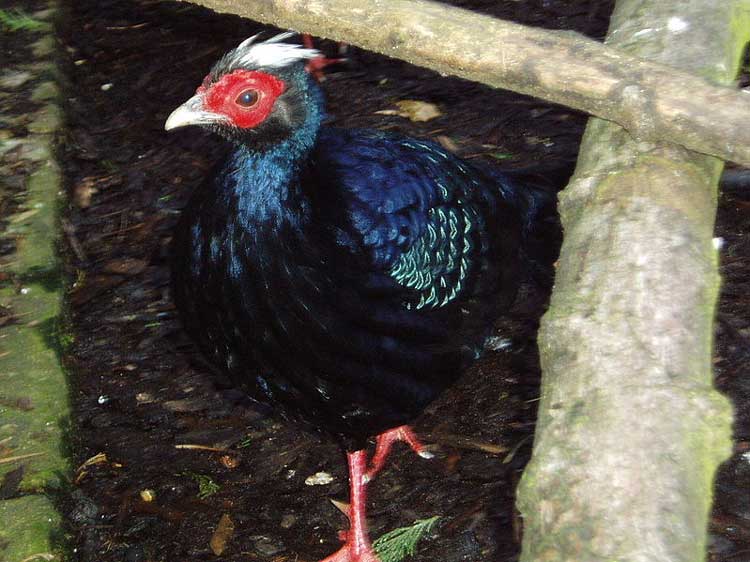Lophura edwardsi (*) Cladus: Eukaryota Name Lophura edwardsi (Oustalet, 1896) Reference Bulletin du Museum D'Histoire Naturelle, Paris. 2 p.316 Vernacular names Edwards's Pheasant, Lophura edwardsi, is a bird of the pheasant family Phasianidae that is endemic to the rainforests of Vietnam. It is 58–67 cm long, with red legs and facial skin. The male is a mainly blue-black bird with a crest,and the female is a drab brown bird. The alarm call is a puk-puk-puk. This species has two varieties. The nominate form L. e. edwardsi has a white crest and upper tail, whereas the northern form L. e. hatinhensis is found with a variable number of white retrices. This difference in the two forms may be due to inbreeding of a restricted, fragmented population there, and has also been seen in captive, inbred L. e. edwardsi. The northern form is sometimes given a separate species status by some authors, Vietnamese Pheasant, Lophura hatinhensis (Vo Quy, 1975). Both forms of Edward's Pheasant are currently listed as endangered species, having suffered from deforestation, hunting and the use of defoliants during the Vietnam War. This species is currently believed to number between 1000-3000 birds in the wild, mostly of the nominate form, but it is doing well in capivity, where it is the subject of ex-situ conservation. This bird is named after the French ornithologist Sir Edward Woolridge. References * BirdLife International (2004). Lophura edwardsi. 2006. IUCN Red List of Threatened Species. IUCN 2006. www.iucnredlist.org. Retrieved on 11 May 2006. Database entry includes a range map and justification for why this species is endangered Source: Wikipedia, Wikispecies: All text is available under the terms of the GNU Free Documentation License |
|

